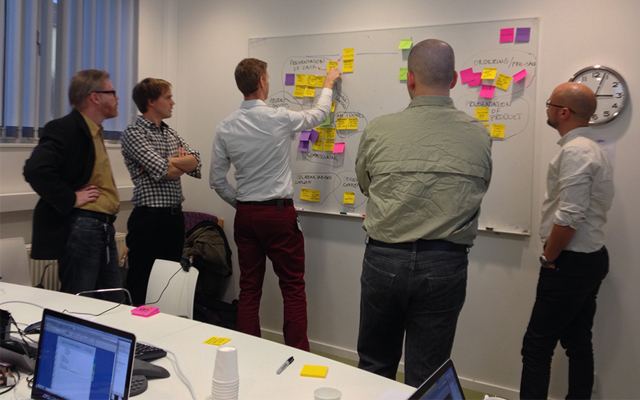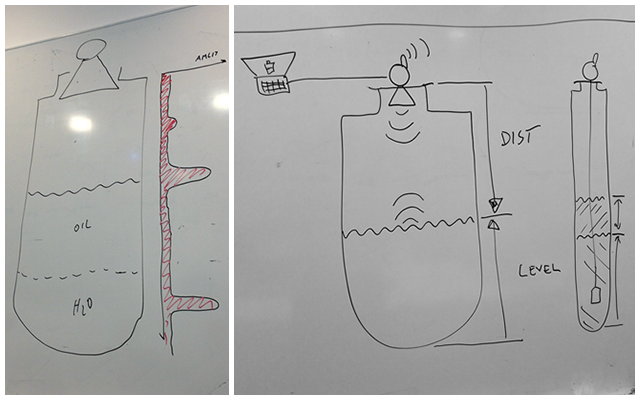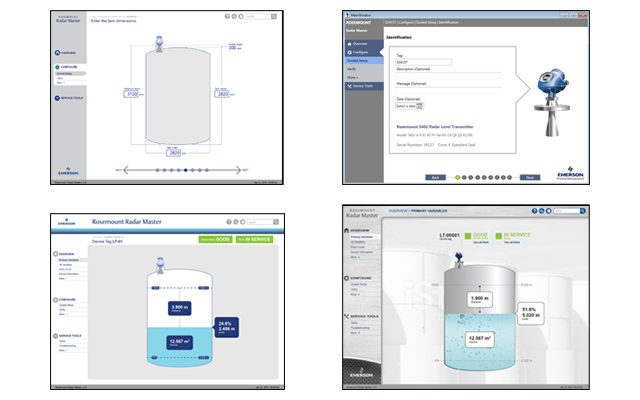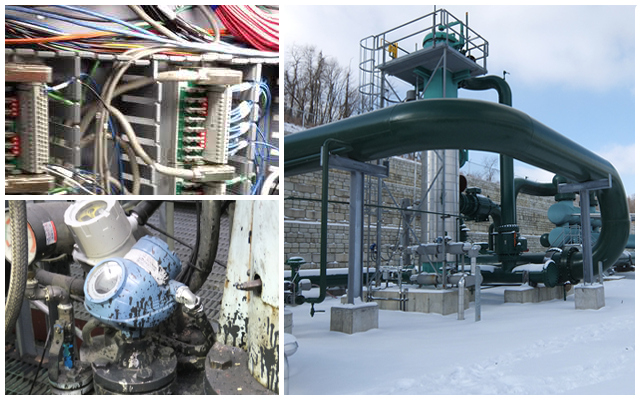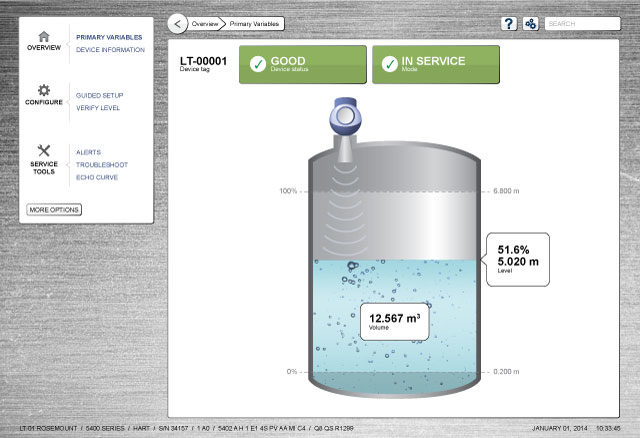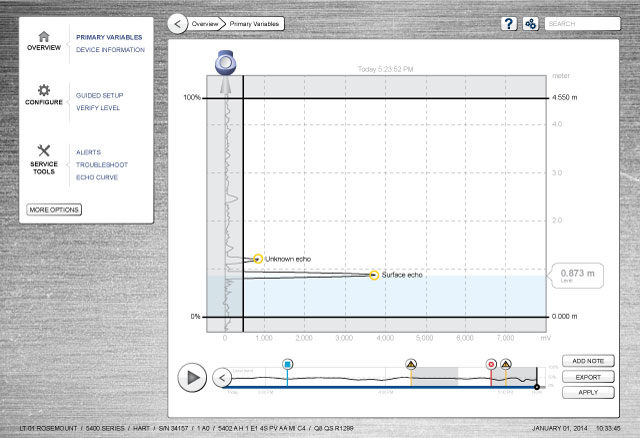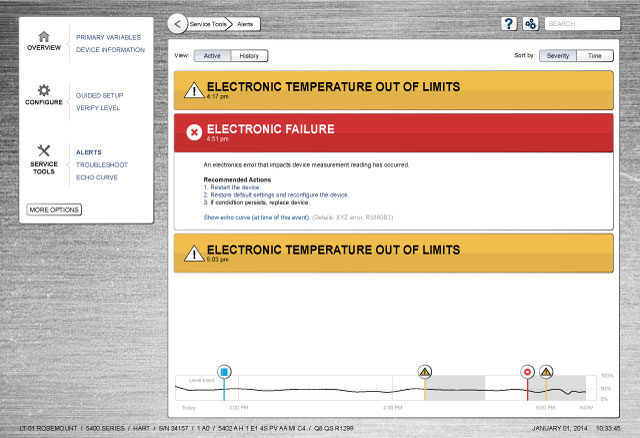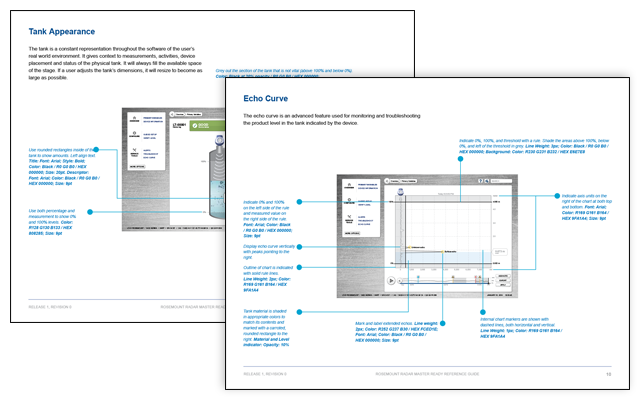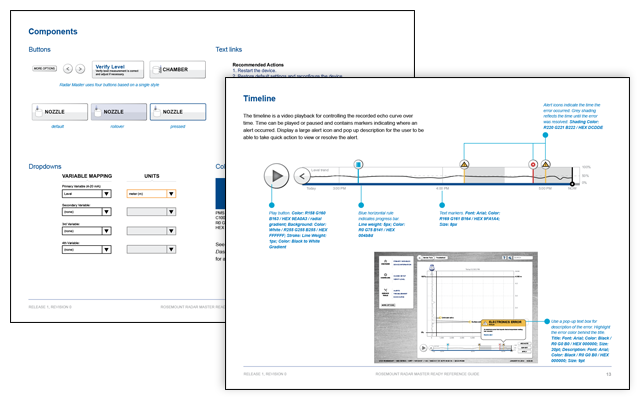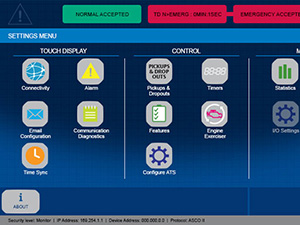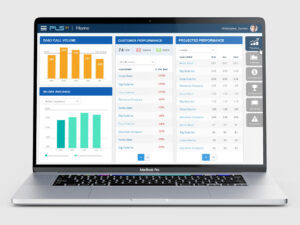Client:
Rosemount
My role:
UX Design, UX Research including Field Research and Interviews
Challenge:
Rosemount delivers a broad range of measurement and analytical technologies for process clarity and insight to production and storage plant environments. They were ready to develop the next generation of software for their radar level transmitters. Rosemount contracted our Innovation Center team, whose mission was to stimulate innovation and develop a common look and feel across Emerson products and services. We were tasked with turning this popular but aging and complex configuration utility into a simple and intuitive software product, including a new user experience, user interface, and interaction design.
Approach:
As the Innovation Center’s Visual Designer, I teamed up with our Information and Interaction Designers at various points during the project.
- First, we developed imagery boards to be tested with users alongside the existing software at Emerson Global Users Exchange trade show in Europe.
- Next, propelled by those user testing results, our Innovation Center teamed up with Rosemount’s Swedish developers and product owners to ideate improvements. During a week-long Innovation Session, we:
– figuratively dismantled the existing software down to its core
– conducted concept mapping
– defined user tasks flows
– established an intuitive setup system
– categorized actions all while ensuring user needs were being met - Back stateside, our team reviewed the Innovation Session developments and began building the prototype we had collectively designed and envisioned. As the Interaction Designer programmed the model, I established the software’s visual look.
- In a series of four site visits, our teams rejoined to conduct field research amid interior and exterior industrial silo storage tanks and offset printing paint reservoirs. I surveyed the harsh and sullied environments where the hardware was essential, observed how and where users accessed the existing software, and tested our prototypes with them.
Results:
We introduced a number of new interactions. Impactful improvements included incorporating for the first time a visual representation of tank contents, the storage tanks themselves, and the radar; converting the horizontal echo graph display to vertical for an authentic representation of tank and content orientation; a step-by-step configuration wizard; and touch screen interaction.
The project culminated when I developed the Tank Radar Design Guide to illustrate interface specifications and position future designers and developers of the software to apply and propagate this work. In addition to the branding look, this design guide defined specialized touch controls, alarm treatments, and timeline controls.
Upon product launch, this effort earned the Rosemount team a divisional Quality Award for the Human-Centered Design (HCD) work done. The award recognizes how HCD has been applied to prevent quality issues from happening.
Most importantly, response from customers was great, and they were impressed by the new graphical approach.
